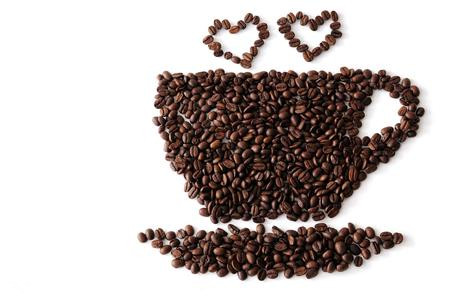Introduction to the producing countries of fine coffee beans in Mexico
Mexico is close to the United States to the north. Due to geographical and climatic reasons, its coffee growing area is close to Guatemala, the production classification belongs to the Central American type, and its coffee production ranks fourth in the world.

Brother Mo, about 70% of his coffee is exported directly to the United States, which is washed and divided into three grades according to their height. Generally speaking, Mexican coffee is evaluated as moderate aroma and mild mellow. Among them, the coffee beans produced by the giant elephant bean tree Maragogipe (also known as Maragogype) are not only three times larger than the average, but also famous for their mellow and round taste.
The best coffee producer in Mexico is Chiapas in the south of the country, where coffee varieties including Tapanchula and Huixtla are grown. The Oaxaca region also produces high-quality coffee beans, of which the Pluma Coixtepec coffee beans, which are grown in natural conditions, are the best. The Oaxaca region also produces Altura Orisaba (Altura Orizaba) coffee and Altura Vatusco (Altura Huatusco) coffee. The Altura Coata Paike (Altura Coatapec) region produces Veracruz (Veracruz) coffee. The best giant coffee beans in Mexico are Liquidambar MS coffee beans.
Due to geographical and climatic reasons, the coffee growing area of Mexico is close to Guatemala, and the production classification belongs to the Central American type. The main producing areas are: Kolabegu, Australia Aluca states, the products are mostly washed beans produced in the highlands, with good aroma and sour taste, the grade is divided into three categories according to altitude: Aldura (219m-1280 m), Prima. Rabe Society (853-1006 m) Puine. Raba Society (640-762 m).
Quality
High quality beans: Aldu Mara, Mexico.
Taste characteristics: large particles, with a strong sweet, sour taste and good aroma.
The best barbecue degree: medium fried or body fried.
It is characterized by a smooth taste, high acidity, medium mellowness and a slightly nutty finish. Sweet, sour and bitter are neutral and suitable.
The taste is sour, special and elegant. Although the professionalism of Brazilian coffee is of little value, it is very suitable for blending. Because of the huge output of coffee, the price is not very expensive.
Mexican drinking method
Mexicans are enthusiastic and optimistic, and the chocolates in Mexican coffee perfectly reflect this. There are different methods of Mexican coffee, but the main difference is whether it contains alcohol or not. let's first introduce the practice of non-alcohol.
Heat a cup of milk, a teaspoon of cinnamon powder and a teaspoon of vanilla powder in a pot. Keep it at medium temperature. The heat is not too high. The milk must not boil. Then add the cocoa powder, fully dissolve and stir well. If you are particularly fond of chocolate, you can use chocolate paste instead of cocoa powder and milk.
Let the milk dry for about 5 minutes, wait until the milk is slightly cool, then pour into the prepared coffee, decorate the coffee surface with cold cream, then decorate with a piece of cinnamon, and the Mexican coffee is ready.
The aromas of chocolate and cinnamon blend together to give off the smell of desert. Tasting such a cup of coffee, you seem to be walking through the gray-green cactus in the Mexican desert.
The most famous alcoholic drink in Mexico is tequila (Tequila). When Mexicans drink tequila, they lick a little salt on the tip of their tongue and then swallow the wine in a small glass. Tequila is a strong wine, the Mexican coffee made by adding this wine is very good, if you have enough courage, you might as well give it a try.
Tequila Mexican coffee and non-alcoholic Mexican coffee is basically true, but first pour a small glass of tequila at the bottom of the cup, followed by milk and coffee, preferably decorated with cream and cinnamon.
Important Notice :
前街咖啡 FrontStreet Coffee has moved to new addredd:
FrontStreet Coffee Address: 315,Donghua East Road,GuangZhou
Tel:020 38364473
- Prev

Peruvian coffee, famous for its organic coffee.
Peruvian coffee, famous for its organic coffee. Peru (Spanish: Per; Quechua, Aymara: Piruw), the full name of the Republic of Peru (Spanish: Repblica del Per), is a country in western South America. Coffee origin: Peru (Peru) is also a major coffee producer. Up to 98% of Peruvian coffee is grown in forest areas, and most producers are
- Next

Detailed steps of making coffee by hand
Detailed steps of hand coffee: 1: fold the filter paper along the edge, put it into the filter cup, pour the ground coffee powder into the filter cup filled with filter paper, the degree of grinding is generally medium grinding, just like coarse granulated sugar. (for example, Little Eagle 2.5-3.5 grind) 2: pour pre-fired hot water, lightly roasted coffee with high-temperature water (85-93 degrees), and deep-baked
Related
- Beginners will see the "Coffee pull flower" guide!
- What is the difference between ice blog purified milk and ordinary milk coffee?
- Why is the Philippines the largest producer of crops in Liberia?
- For coffee extraction, should the fine powder be retained?
- How does extracted espresso fill pressed powder? How much strength does it take to press the powder?
- How to make jasmine cold extract coffee? Is the jasmine + latte good?
- Will this little toy really make the coffee taste better? How does Lily Drip affect coffee extraction?
- Will the action of slapping the filter cup also affect coffee extraction?
- What's the difference between powder-to-water ratio and powder-to-liquid ratio?
- What is the Ethiopian local species? What does it have to do with Heirloom native species?

